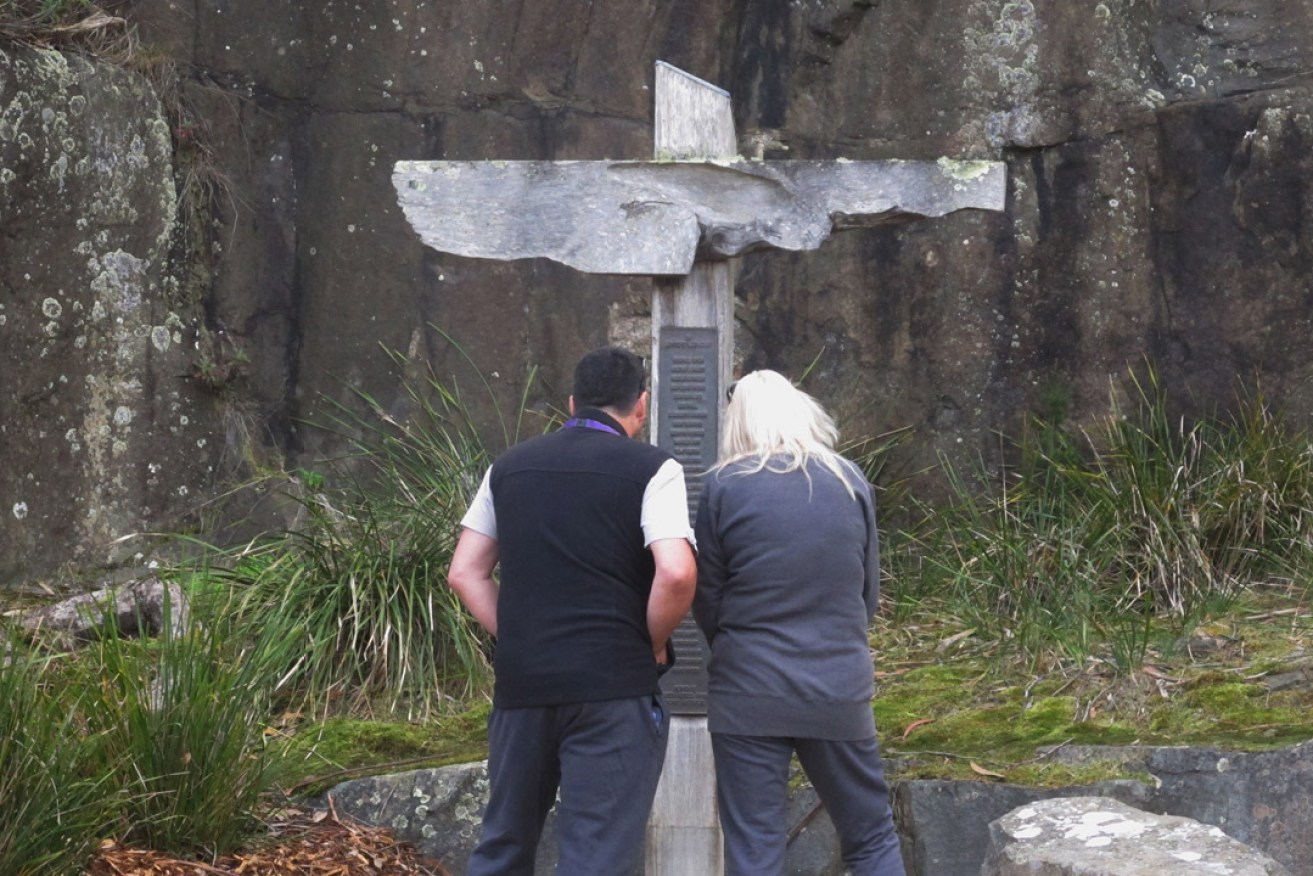The man Tasmania wants to forget
Two decades after he killed 35 people in a bloody rampage at Port Arthur, lone gunman Martin Bryant is still believed to thrive on the notoriety of his crime.

Tourists read names on a memorial at the site of the Port Arthur massacre. Photo: AP
Every Tasmanian knows who he is and what he did.
But they don’t want to speak or hear his name.
Because in the years since his lifetime incarceration for shooting dead 35 people at Port Arthur, one of the most common stories out of Hobart’s Risdon Prison is that Martin Bryant gets a kick out of publicity.
He thrives on the notoriety of his crime.
April 28, 2016, will mark two decades since the then 28-year-old drove a yellow Volvo from the southern capital, southeast to the Tasman Peninsula and on to Port Arthur.
Unemployed but independently wealthy through inheritance, and described as a loner by those who knew him, Bryant’s only passenger that day was a large sports bag containing ammunition, a rapid-fire Colt Carbine and a battle rifle.
His subsequent trail of destruction took the lives of 35 tourists and locals, some children, and injured another 23.
Special ops police from Melbourne called for a bulldozer to lead their planned raid of a bed and breakfast property, the pleasantly named Seascape, where Bryant later holed up with a hostage.
The heavy machinery wasn’t needed as he was forced out by a fire, screaming with his clothes alight as he was taken into custody and to hospital for treatment.
Months of police questioning followed.
Footage of those interviews, recently aired by the Seven Network, showed Bryant initially denying any knowledge of the killings, although he did admit a kidnapping that day.
“And you reckon I’ve got something to do with this?” the straggly blond-haired killer asked detectives after being shown photos of the victims’ dead bodies.
“It is sad, isn’t it? It’s horrendous. Horrific. For anyone to go down there and do a thing like that.”
Lawyer John Avery tried to convince his client that the weight of evidence was overwhelming and that a trial would reach an obvious guilty verdict.
“I was trying to avoid a show trial, a circus, a pantomime,” Avery told the Seven Network.
Bryant then decided to plead guilty to the murders but not guilty to multiple charges of attempted murder over those he injured.
“That would have been an absolute stupidity, but it also involved having all these witnesses, damaged people, come to court and have to give evidence where the outcome was always inevitable,” Mr Avery said.
“What he wanted was the people who he’d so grievously maimed, he wanted them to come to court and say it was him.
“He wanted to be the centre of attention.”
But survivors were spared the agony of giving evidence in court when Bryant finally pleaded guilty to 72 charges including murder, attempted murder, causing grievous bodily harm and arson.
He told his lawyer to offer no explanation for the murderous rampage.
A forensic psychiatrist who examined Bryant described to the court a man with the mind of a child who delighted in tormenting others.
On November 22, 1996, more than seven months after the massacre, Tasmanian Supreme Court Chief Justice William Cox ordered Bryant serve 35 life sentences without parole.
The man Tasmania wants to forget will die in prison.
-AAP




